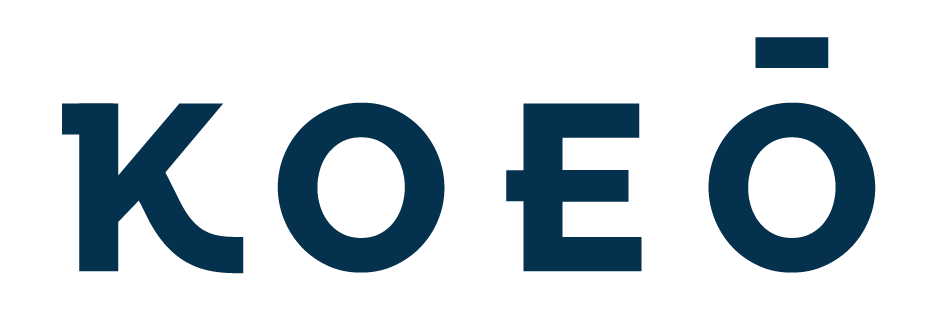UPPER CERVICAL CHIROPRACTIC CARE 5: What to Expect in Your Upper Cervical Care Program at KOEO
Part 5 of our Upper Cervical Care series is a brief overview of what happens in your Upper Cervical care program and your regular visits.
A summary of what we’ll cover:
> How Change and Improvement Happens in Your Body
> The Two Phases of an Upper Cervical Care Program
> PHASE 1: Restore - The Intensive Part
> PHASE 2: Advanced - Ongoing Incremental Progress
> What Happens in a Regular Upper Cervical Care Visit?
> What Happens at an Upper Cervical Change Evaluation Visit?
Recap:
> PART 1: The difference between regular Chiropractic and Upper Cervical
> PART 2: The Scanner - Computerized Infrared Thermography
Up next:
> PART 6: Which Upper Cervical technique is right for you?
> PART 7: The most FAQs about Upper Cervical care
Once a month we send out KOEO Loves - a compilation of our latest blogs or our 5 fave things for healing and health. Sign up below.
How Change and Improvement Happens in Your Body
Making big changes in life takes time. It takes time to create a new habit, it takes time for that new way of being to become consistent and stable, and then it takes time until its so ingrained in us that its now our new normal.
The same thing happens in our bodies.
Imagine training for a marathon when you’ve only ever run for a bus.
During the first phase, its going to take very regular, consistent running sessions to get your body’s level of fitness, strength and stamina to a point where you’re able to run long distances without feeling major side effects from the effort.
It can feel particularly challenging at first, you’re probably sore in your muscles from using them in new ways and its quite probable that you notice new things you’d never felt before. Its probably quite exciting to feel and notice all the changes happening not just in your body, but also in your energy and sleep as your body’s function improves.
Once you’ve reached this new level of function in your body, you need to keep training in order to ensure you’re at your best for the marathon.
However in this second phase you probably dont need to train as often, the changes feel much less dramatic and your progress seems more incremental and less dramatic (and less exciting!). It takes continued dedication to get to your goal, but you know the old adage, “slow steady pace wins the race” so you keep at it.
Sometimes it can seem like, in this second phase of the process, you’re not really progressing but when you look back to where you started, you realise how far you’ve come.
This is quite similar to how it feels to go through an Upper Cervical Chiropractic care program.
The Two Phases of an Upper Cervical Care Program
Your care program is split into two phases:
PHASE 1: Restore (intensive)
PHASE 2: Advanced
The overall aim of your upper cervical care program is to allow your autonomic nervous system function to return to normal and allow your body to return from a state of dis-ease to a state of ease.
With an optimally functioning nervous system, free from interference, your body’s innate intelligence is free to do what it does best; run the show, keep you adapting to everyday life and stressors, bouncing back in a healthy, resilient way.
PHASE 1: Restore - The Intensive Part
We know that the body works in cycles, just like everything else in nature.
What we notice is that, on average, in the first 3 months the most significant changes occur.
This is the time when your body begins to break the current, compensation pattern that its been holding (dis-ease). Then it begins to return to its normal, healthy pattern (ease).
As it remembers this normal state of being we see signs of ease in your nervous system and body. You begin to hold your adjustments for longer. Holding = healing. The longer you’re holding your adjustments for, the better.
Visit Frequency
Our focus in these first weeks is removing interference to your brainstem with your Upper Cervical precision adjustments in either Atlas or Axis.
Following your first adjustment its quite common to return to baseline within 48-72 hours. Therefore, we check you again a few days later. A typical care program during the first month is twice weekly visits so that we can check if you’re holding your adjustment and adjust as needed until you start holding your adjustments for longer. Whilst some people can start holding their adjustments within the first week or two, others can take longer.
What You Notice
We use the CIT scanner at every visit, as well as monitor your body’s structural changes both pre- and post-adjustment. This way we know that you are progressing and can adapt your care as needed.
During these first weeks its common for our clients to notice they begin to feel different. Their primary pain or issue begins to change. In addition they report other signs of a better functioning autonomic nervous system. Things like:
Improved sleep quality (falling asleep quicker, waking up less often and feeling more restored in the morning)
Better bowel movements
Changes in their menstrual cycles
Feel calmer and more grounded
Old injuries resurface to be healed (a phenomenon known as ‘retracing’)
Feeling a discomfort in a new place as the body rebalances itself and the muscles, tendons and ligaments adapt to this ‘new’ (really its the old way) of being.
Summary of Typical Phase 1 Care Program
Phase 1 is typically around 3 months, however some people require up to 5 months in this intensive phase until they achieve stability.
Important to note: This is an average - your specific care program will be based upon your unique situation, age, history of trauma, symptoms and pain level, radiograph findings, nervous system scan findings, all other physical exam findings and our experience of people similar to you.
Month 1: 2 visits/week
Month 2: 1 visit/week
Month 3: 1 visit/week
At each visit we will be measuring the internal changes with scans at every visit as well as monitoring your physical and structural changes. In addition, we will carry out two special visits called Change Evaluations where we do more comprehensive testing half way through and at the end of your intensive Phase 1.
PHASE 2: Advanced - Ongoing Incremental Progress
As you become more stable and hold your adjustments for longer you’ll require your visits at less frequent intervals. In your first year of care, once you’ve completed Phase 1, you’ll typically come for a check up about once a month. As you progress and stabilise you may be someone who only requires a check up every couple of months.
Again, this will completely depend on variety of factors e.g. how long your body was subluxated for, how compensated and adapted your body was before starting care, your history of physical and emotional traumas, your lifestyle habits and stressors and your age.
Changes in this stage of care and continuing to happen however often seem less obvious as you’re becoming used to your new ‘normal.’ We will continue to carry out Change Evaluations to monitor and measure your progress throughout this second, Advanced, phase of care.
Summary of Phase 2
Typically starts at around month 4. Some people need twice a month during months 4-6.
Then once a month is typical until we reach12 months. At this stage, one full year, 99% of your body has renewed itself and most people are really a whole new person.
Month 4: 1-2 visits/month
Month 5: 1-2 visits/month
Month 6: 1-2 visits/month
Months 7-12: 1/month
If you chose to continue monitoring and checking your nervous system moving forwards, which we highly recommend, you will come in for check ups at an appropriate rate for your body. This typically ranges from monthly to once every quarter.
What Happens in a Regular Upper Cervical Care Visit?
Scan + Check - A scan will be taken of your nervous system which gives us the information we need to know if you require a specific adjustment to your Atlas or Axis. Sophie will also always check through your body with you laid down on the table to see what your signs of ease / dis-ease are showing up on that day. She’ll check things like your leg length, your muscle tension in your legs, pelvis, back and neck, the movement and freedom in your spine and rib cage and the tension and alignment of your cranials (skull).
Adjust - If your specific upper cervical adjustment is required on that day this will be done. As you advance through care, and as needed, other adjustments may be done in your pelvis or cranials. Some gentle tissue releases may also be done to help your body be open and receptive to your UC adjustment.
Rest - You’ll spend 15-20 minutes in our dedicated resting suite to allow your body the time to process and assimilate your adjustments.
Recheck - Sophie will always re-scan you, as well as check everything in your body once again. Monitoring the changes in your scan and body in this way means we can ensure that you’re leaving the office better than you came in. Your body does the work in between your visits, its our job to make sure its set up to be able to do that.
What Happens at an Upper Cervical Change Evaluation Visit?
These special visits happen at regular intervals throughout both phases of your care program.
The day prior to your Change Evaluation you’ll receive a link in the email confirmation to a brief online questionnaire so you can record your progress so far including any changes you’ve been noticing, what things you’ve been doing to help support your body in its process and any concerns or questions you have and would like to discuss in your Change Evaluation visit.
These visits follow the same flow as your regular visits however extra checks and measurements are taken in addition to the regular scans and checks.
All the things that were measured on your New Client visit are re-measured so that we can constantly monitor your change and progress. This means that if anything needs to be changed in your care program we can do so as we go.
The visit following your Change Evaluation Sophie will report back to you what is happening and changing so far in your nervous system and body.
RELATED POSTS








